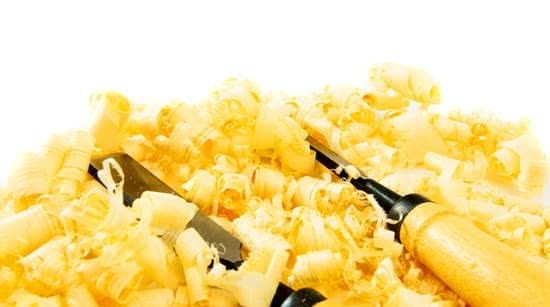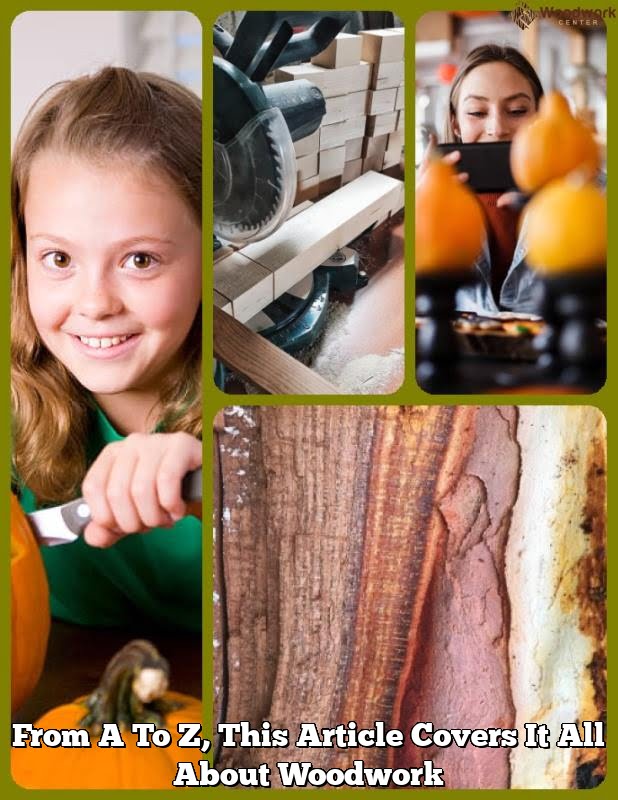Introduction
Woodworking machines are integral pieces of equipment in any woodworking shop. From the table saw to the jointer, each one is responsible for precision cuts that make sure every piece of wood fits together perfectly. Unfortunately, these machines are also prone to dust and other particles that can cause damage to the machinery down the line. To protect your investment, it’s best to invest in a woodworking machine cover.
Woodworking machine covers are made from tough materials like canvas or nylon and come with zippered or drawstring openings so you can easily remove them when needed. They typically come pre-made for standard machines but can likely be custom fitted for machines that have a non-standard size. Many covers are even water resistant, helping prevent rust and corrosion from hindering the performance of your machinery over time.
Perhaps most importantly, covers can help keep your shop clean by shielding your machines from pesky sawdust and other debris as well as from splashing liquids and droplets from wet processes like staining or finishing. This also reduces cleanup time afterward since you won’t have to wipe down your tools before spraying them down with lubricant or checking for any possible defects. With regular use, a cover can even minimize static electricity buildup which could potentially decrease static shocks when working on projects around sensitive electronic components nearby.
Exploring the Different Materials Used in Woodworking Machine Covers
Woodworking machine covers are an important part of any wood shop. They protect expensive tools and equipment from dirt, dust, and other environmental hazards that could ruin delicate parts. Without protection, the value of machines can decrease due to rusting, corrosion, and other damage caused by the elements.
When it comes to choosing a cover for your wooden machinery, there are several different materials you can use. Common materials include plastic sheets, cloth covers, metal mesh covers, rubberized covers and waterproof windows. Each type of cover has its own benefits depending on the machine and how long you intend to keep it covered for. Plastic sheets provide a low-cost way of covering most machines in a short amount of time. Cloth covers are great for protecting against dirt particles but won’t always last as long as other materials. Metal mesh covers provide good air circulation while helping to keep out dirt and dust particles. Rubberized covers offer good protection from moisture as well as resisting staining from chemicals and oils used in woodworking projects. Lastly, waterproof windows allow natural light into the workspace while limiting dirt or debris from entering the area.
No matter which material you choose for your woodworking machine cover, it is important to make sure that it fits properly and securely over all areas of the machine so that it can provide the best protection possible
Important Factors to Consider Before Buying a Machine Cover
1. Quality: When shopping for a machine cover, it is important to look for a high-quality product. Look for one that is made from strong material such as nylon or polyester with reinforced stitching along all seams. Also, make sure the cover is waterproof, so it can protect your valuable tools and machines from moisture and dust.
2. Size: Make sure to measure the size of your machines carefully before purchasing a cover. If the cover is too tight or small, it will be more difficult to remove and put on whenever you’re using your machine. On the other hand, if it’s too loose or large, the fabric may bunch up when placed over your machine and reduce the efficiency of protection it offers.
3. Easy on/off: It should be easy to get a cover on and off your machines without having to fumble around with zippers and buttons that could potentially get jammed up or broken. Also look for products with built-in grommets that allow for secure fastening around your machines for optimum security against outdoor elements.
4. Portability: Consider how much portability you need from a machine cover before making a purchase decision. Some covers are designed specifically for indoor storage so they can easily be folded or rolled up when not in use while others are designed to withstand all weather conditions and require additional construction materials (such as securing straps) to keep them secure during windy periods outdoors.
5. Price: Since there are countless types of machine covers available on the market today, do not let price be the sole factor when selecting one as this could compromise its quality and longevity down the line. Compare products among various retailers before making any purchasing decision so you can find an item that strikes the balance between being cost effective while still being extremely durable at the same time
Exploring the Pros and Cons of Each Material
Woodworking machine covers are an essential tool to protect your expensive and delicate power equipment against dust, spills, and other debris. It is important to choose the right type of cover material for your needs. Depending upon your safety requirements and budget, different materials can provide advantages in different areas.
Some of the most commonly used materials for machine covers include cloth, canvas, leather, plastic sheeting, clear vinyl and rubberized fabric. Cloth and canvas are both lightweight but also provide a tight fit because they are more flexible than leather. Cloth covers are also often less expensive than leather ones. If you want something more durable than cloth or canvas covers, then leather is an option because it offers better protection from scrapes or other damages caused by wood pieces. Plastic sheeting provides a barrier between the machine and any loose particles that may get inside the cover due to air movement around it; however, it can be less flexible which may make it difficult to put on and remove. Clear vinyl is great if you need a clear window that allows viewing what going on underneath your covers while providing some protection against dust particles; however they do not offer much protection against scratches or wear over time without adding additional reinforcement layers underneath them. Rubberized fabrics can provide strength while still being breathable; though they tend to be heavier in weight which makes them tough to move around from location to location.
When researching woodworking machine covers, it’s important to consider all of these pros and cons before making a decision about which type of cover will work best for you so that you get the most cost-effective solution for your shop needs.
Common Uses for Woodworking Machine Covers
Woodworking machine covers provide a layer of protection over equipment and tools. In woodworking, the highest priority is protecting the integrity of the piece being created. Covers can help ensure that delicate pieces, such as fine-grained woods, are not damaged by dust and debris from other tools.
Covers can also help to prevent accidental burns on machines. Some models even come with fire retardant features. These types of covers are especially useful for professional workshops with multiple machines in use at once. This helps guarantee that machines remain pristine and free from damage or fire-related accidents.
Woodworking machine covers can be used to protect larger power saws, belt sander and planer machines; they are most commonly used when storing such powerful machinery away during idle periods to help reduce rusting or wear due to environmental exposure or lack of use. Additionally, the covers can help decrease levels of noise caused by certain machinery, allowing for quieter and more pleasant working hours. Woodworking machine covers are usually made from a durable canvas material with adjustable straps for easy installation and removal depending on need or task required associated with each particular project involving these machines.
How to Care for and Clean Machine Covers to Extend Its Lifespan
When caring for and cleaning machine covers in order to extend its lifespan it is important to recognize that different materials require different care instructions. Different materials can include cotton, felt, vinyl, or leather. Cotton is a breathable material and therefore may require more frequent cleaning than the other types of materials. It is best to read the manufacturer’s instructions before using any products to clean the cover.
It is also important to regularly vacuum machine covers in order to remove dust and other small particles that can accumulate over time if left unattended. Vacuuming is especially important on felt covers as it can help prevent small particles from becoming lodged within the fibers of the material and ultimately damaging it. Regular inspections of the cover should be conducted while vacuuming, as this will allow you to quickly identify any tears or deterioration that may need attention right away.
Do not attempt to use a washing machine with any type of machine cover as it can cause damage and potentially ruin the item completely. If necessary, lightly spot clean only with mild detergent and warm water on a soft cloth. If necessary for tougher stains, weaken the detergent with enough water so all suds are gone, then apply carefully next vigorously scrubbing all areas affected until stain is removed. Be sure not to use too much force when scrubbing as this can damage sensitive materials such as lace or leather. Finally, allow full drying before reapplying by laying flat or hanging from a covered line outdoors if possible and out of direct sunlight try to keep fabric away from rain or snow if at all possible for ultimate protection against wear and tear due to weather conditions over time.
Selecting the Right Cover for Your Woodworking Machine
When selecting a machine cover for your woodworking machine, it is important to consider the size of the machines, what type of protection you need and how often the covers will be used. Machine covers come in various sizes and types to accommodate all sorts of machines, from large industrial saws to small precision cutters. The type and thickness of material used also varies depending on the application. If you are looking for heavy-duty protection, there are thick canvas covers that offer superior durability and weatherproofing. They can even have plastic liners to protect against water damage or abrasion. For lighter protection or occasional use, thinner fabric covers may be adequate. You may also want to consider fire-resistant fabric if your workshop is exposed to sparks or heat sources. Another factor to consider is ease of installation; many models feature adjustable straps for custom fitment, so ensure that the cover has these features before making a purchase. Finally, make sure that any cover you buy is approved for use with your specific machine model; this way you can be assured of proper coverage and protection when it comes time to use it.
Conclusion
Woodworking machine covers are an essential investment for any woodworker, whether they’re a professional or hobbyist. When you invest in a quality machine cover, you are protecting your valuable machines from dust, dirt and other debris that have the potential to cause damage. In addition to keeping your machines clean and running smoothly, machine covers also provide additional shelter from the elements such as sun, wind and rain which can damage the finish and parts of your machine over time. Furthermore, quality machine covers will often feature things like ventilation panels and waterproof materials for extra protection against moisture. Investing in a high-quality cover could extend the life and functionality of your valuable woodworking machines for years to come, potentially saving you money on repairs and replacements down the line.

Hi everyone! I’m a woodworker and blogger, and this is my woodworking blog. In my blog, I share tips and tricks for woodworkers of all skill levels, as well as project ideas that you can try yourself.





